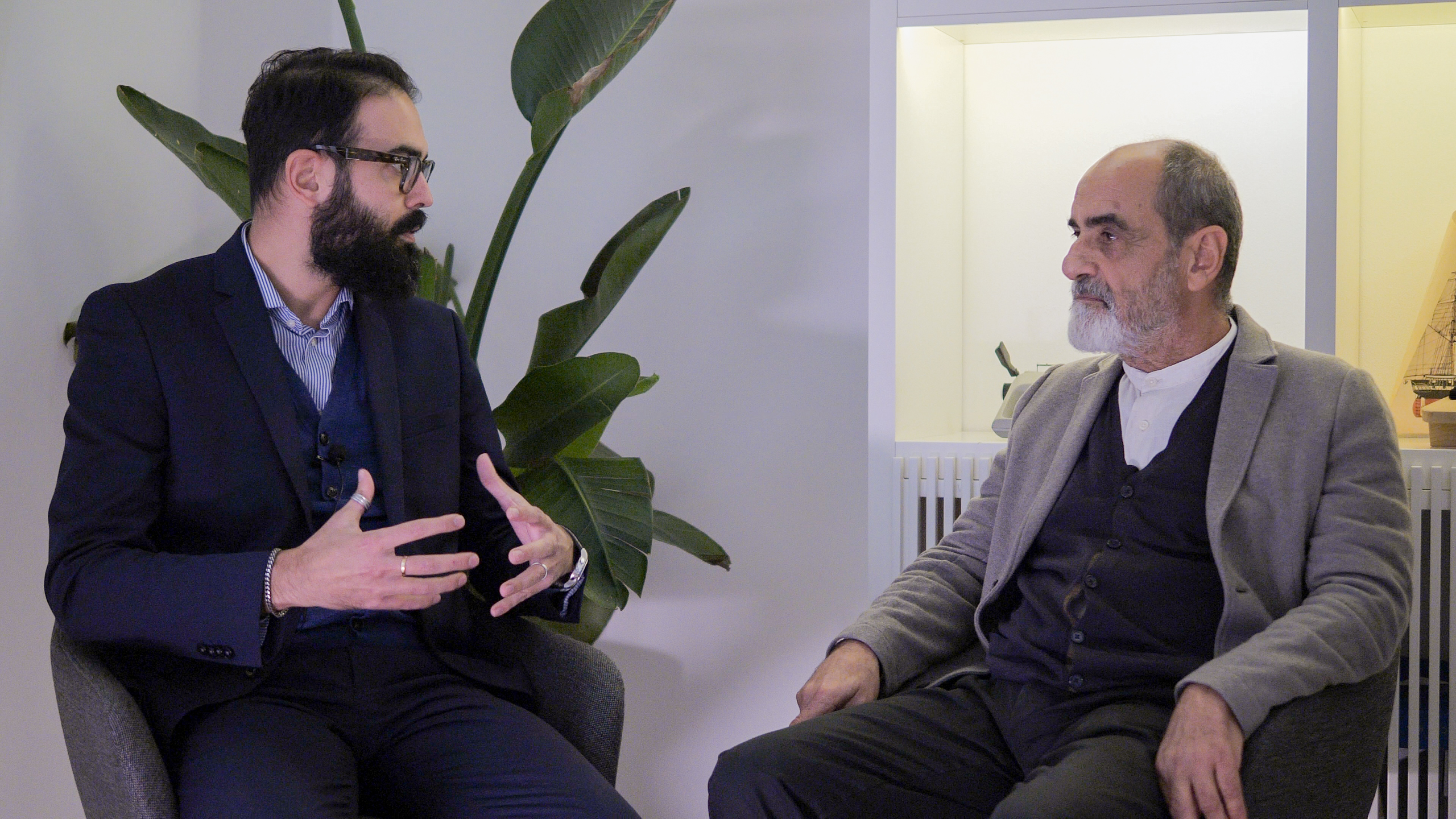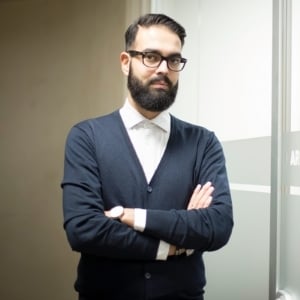Architectural Talks, the series of interviews by Manni Group in collaboration with YACademy, meets Edoardo Milesi, founder of Studio Archos.
In this interview you will find:
Edoardo Milesi and Studio Archos
Known for his focus on environmental sustainability and enhancing local areas, after graduating from the Milan Polytechnic, Edoardo Milesi founded Studio Archos in 1979, working across the board in architectural design, urban redevelopment and landscaping.
His stylistic signature is characterised by consistency with the inspirational principles that have distinguished him since his beginnings and constant research aimed at improving building performance.
Studio Archos’ design philosophy is based on a focus on the users’ needs and on the surrounding environment, seeking to create harmonious and functional living spaces.
In 2014, Edoardo Milesi founded the association Scuola Permanente dell’Abitare (SPdA), headquartered in Bergamo, in order to promote the exchange of ideas between different disciplines and fields of knowledge.
Milesi’s most famous projects include the Fondazione Bertarelli Forum and the École technique Pape Jean XXIII in Port-au-Prince.
Milesi has been internationally recognised for his ability to create sustainable and functional architecture, winning numerous prizes and awards throughout his career.
The most recent was in 2022, with an Honourable Mention at the Fassa Bortolo Domus Restoration and Conservation International Award.
With his firm, Archos, Milesi continues to explore new approaches to sustainable architecture, setting an inspiring example for architects worldwide.
Interview with the architect Edoardo Milesi
Manni Group.: Good morning Mr. Milesi. At Studio Archos you have an interdisciplinary approach, but right now architecture is becoming more and more about technology, more and more about 'specialising'.
So how can we define the architect? Who is this person who roams the work world?
Edoardo Milesi: The architect has an important role... Important assuming that he or she really is an architect, in the sense that their role, which is half humanistic and half technical, should above all be to coordinate specialists so that the ultimate goal and purpose is achieved, namely that of working around man to improve his habitat, possibly without inflicting any particular effort.
So what I also do at the firm with my students is to try to guide them towards what the profession of the architect is, which is increasingly lacking and is disadvantaged as a generalist figure compared to all the absolutely necessary, compulsory specialisations, but which necessarily refer to a specific sector and often lose sight of the complexity.
And it is precisely with complexity that the architect needs to work. So certainly their visionary, even utopian projects must have a concreteness in order to be realised. Keeping the objective strong around man? This is something that is increasingly lacking and that I consider fundamental.
M.G.: We have therefore brought this theme of man to the centre, despite the fact that architecture is increasingly living through algorithms, through almost extreme technology. We talk about data upon data being put into these buildings, when clearly there is something else that needs to be taken into account.
Milesi: Algorithms are very useful in facilitating us in that rational sector, that small cognitive part that we have... but the whole emotional aspect is perhaps the most substantial part, where the algorithm has nothing to do with it, in fact it risks reducing our capacities, of chasing the process that is the real project of architecture.
Architecture is not so much about the construction, the artefact or the modification of space, as it is about what that modification, that body, that construction can trigger at the level of behaviour, of how much they can influence lifestyles, relationships with nature that are as difficult as ever at this time.
This is perhaps a small and significant flaw of this increasingly specialised and technological vision, which is precisely that of losing the capacity for thought that we summarily call holistic, and not only passing through the rational part. I am not demonising the algorithm, I consider it a great tool as long as everything is not reduced to that small part of our cognitive system.
M.G.: Speaking of the elements that make up our buildings, we often notice thejuxtaposition of several materials in the design. How can they interact with each other? But above all, how do you see theuse of steel or the use of prefabricated structures in this construction industry that is increasingly moving towards a world of prefabrication and offsite?
Milesi: Of course, this generalist and holistic view is useful not only for keeping the humanistic aspect under control, but also the technical and technological aspect.
Not being specialised in a specific area allows us to use more techniques and above all to combine technique with technology. I want to highlight a small difference between technique and technology.
Technique comes to us from nature, which we then use and refine.
Roman concrete has become something different, something we have copied from nature.
Technology is a human invention that is superseded by the next invention. Architecture, for example, which addresses man in his habitat, must not be so dependent on technology, it runs the risk of ageing along with technology and this is a risk I believe we cannot afford. In our work, apart from monumental conservation restoration, which is somewhat the hallmark of all our research and which has also helped us a lot in new buildings, we mix various techniques.
I would say that 50% of new buildings are built using the dry technique, using materials, such as steel, together with wood when one works better than the other.
And I have to say that even in regeneration, renovation and sometimes even in listed buildings where it is possible to intervene with contemporary architecture, we tend to use the prefabricated-to-design technique, i.e. the dry technique, with elements that are produced in the factory and then assembled on site, which goes in the direction of sustainability.
The first form of sustainability is economic, where economy also means saving raw materials, saving on transport optimisation.
Our techniques are still too primitive. We build walls and then unbuild them to accommodate the plant engineering. I have, ever since I graduated, found this utterly foolish and very antiquated. This means being able to think of a layered wall that can already accommodate a plant installation phase. The whole technological part, it seems to me, is the only way we can afford to go.
M.G.: You spoke a lot about nature and touched on the subject of sustainability. What does sustainability mean to you?
Milesi: It means being fair to nature. It is something that goes beyond morals, culture and ethics. It means considering nature as the one who gives us life and death. So for me, nature is the most sacred thing.
Deus sive natura, said Spinoza. I absolutely agree.
There is nothing atheistic about this statement. We must bow down to nature and live in it. Sacrificing pieces of nature is something insignificant compared to evolution, to the earth, to what surrounds us. But it is really something contrary to our living being.
It seems that man is really the only animal that goes against his own interests by destroying his environment. And this has given us the need to invent ethics, which unfortunately, however, for cultural and religious reasons, for taboos and prejudices, sometimes goes against nature, which is our own nature. And this is a big problem, which the architect absolutely must have as a founding principle.
M.G.: So designing is about making man, architecture, nature interact?
Milesi: There is no such thing as man standing outside nature, and architecture is not a means to stand outside nature.
Yes, it is also a means of defending oneself against nature. Nature is also cruel, but somehow, always indulging, always with the certainty that she is stronger, that she is able, that we are here because of her and there is no going the other way.
M.G.: You also train young professionals and are here at YAC to give lectures. What advice would you give to a young professional approaching the world of architecture?
Milesi: To be an architect as it should be done, that's what I discuss in my lectures, what has to be done in the architecture’s profession. Research must be done in history, history tells us everything and also explains the path of what happened during the time of the architectural profession. In this moment, but also in ancient times, in the Enlightenment and positivism, the architect chooses to favour the rational side. It is clear that it favours specialisation.
The architect actually divides himself, and suffers in this ambivalence, in this duality, in being concrete, in this strongly material aspect, which is that of building our own, and in the absolutely immaterial aspect, which, however, makes living together possible, makes relationships necessary, makes conflicts possible, that are the fertile part of our culture. Unfortunately, the choice of being an architect implies ongoing education, continuous training. Architecture is not taught, it is learned... through perpetual curiosity, always looking to the future, even in the worst of times.
M.G.: Thank you Mr. Milesi!
Milesi: Thank you everyone, thank you


